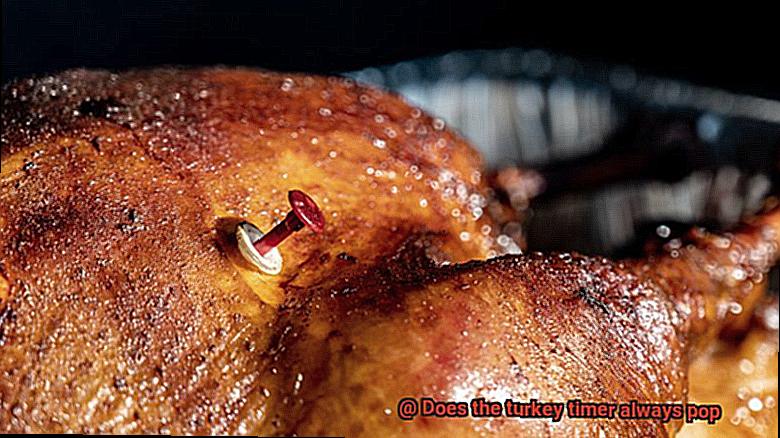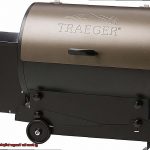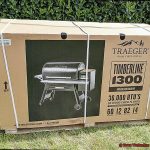Thanksgiving is just around the corner, and it’s time to start prepping for the perfect turkey recipe. Whether you’re a fan of the classic oven-roasted bird or prefer a trendy deep-fried turkey, there’s one question that always pops up – does the turkey timer always pop?
The turkey timer has been a go-to tool in holiday kitchens for years. It’s an easy way to know when your bird is cooked and ready to devour. But have you ever wondered if the timer always pops? This question has sparked heated debates and caused confusion among many chefs.
In this blog post, we’ll dive into whether or not the turkey timer always pops, how it works, and what to do if it doesn’t. We’ll explore the science behind this handy gadget and why it sometimes fails. Plus, we’ll share some helpful tips and tricks for cooking a perfect Thanksgiving turkey, even without relying on the timer.
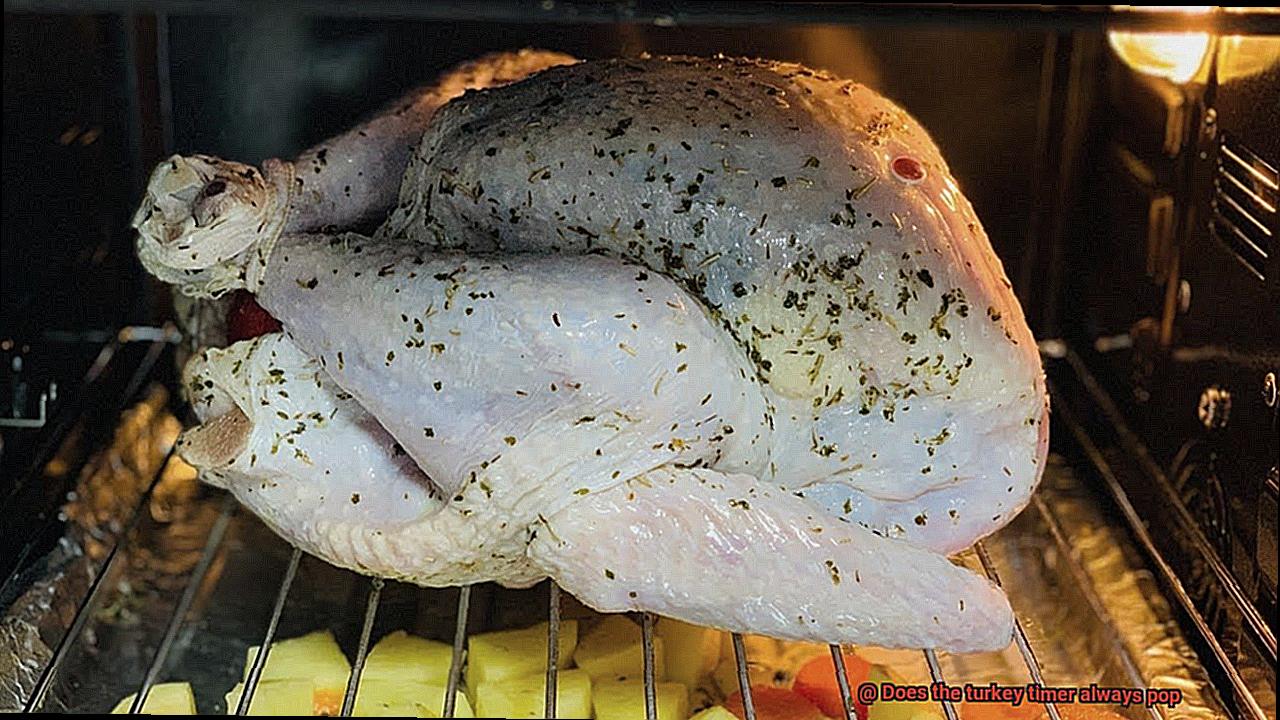
So get ready to become a pro on all things turkey timer. By the end of this post, you’ll know everything you need to impress your guests with a mouthwatering Thanksgiving feast.
Contents
How Does the Turkey Timer Work?
Cooking a turkey can be a daunting task, but fear not, for the turkey timer is here to help. But how exactly does this small device work its magic?
The turkey timer is a tiny contraption that comes with many whole turkeys. It consists of two metal prongs attached to a small plastic base and works by using a spring-loaded mechanism that is activated by heat. The prongs are made of a metal alloy specifically designed to melt at a certain temperature, usually around 165°F (74°C), which is the minimum safe temperature for cooking poultry.
Once the turkey goes into the oven, the timer is inserted into the thickest part of the breast or thigh meat, making sure it doesn’t touch any bone. As the bird cooks, its internal temperature rises. When it reaches the preset temperature, the metal prongs of the timer soften and bend, causing the plastic base to pop up.
This popping sound indicates that your turkey has reached its target internal temperature and is fully cooked. However, it’s important to note that relying solely on the turkey timer may not always guarantee perfectly cooked meat. Other factors such as oven temperature accuracy and meat placement can also impact how well your bird is cooked.
To ensure your turkey is safe to eat and cooked to perfection, use a combination of a meat thermometer and a turkey timer. A meat thermometer is more accurate in measuring internal temperatures than the timer alone. Additionally, following cooking guidelines carefully will prevent any mishaps.
Factors That Can Impact Whether or Not the Timer Pops
You know the importance of using a timer. But did you know that there are various factors that can affect whether or not the timer will pop? As an expert in this area, I’m here to give you the lowdown on what to watch out for.
First off, let’s discuss the two main types of timers: mechanical and digital. Mechanical timers work by using a spring mechanism. They’re designed to pop up when the internal temperature of the turkey reaches a certain level. However, these timers can be affected by several factors, such as variations in cooking time, turkey size, and cooking temperature. Digital timers, on the other hand, use electronic sensors to monitor the internal temperature of the turkey. They’re generally more accurate but can still be impacted by variations in cooking time and turkey size.
Another vital factor to consider is the placement of the thermometer. For accurate readings, it should be inserted into the thickest part of the turkey and away from any bones or fat. Keep in mind that opening the oven door frequently or cooking at too low of a temperature for too long can also affect whether or not the timer pops.
Here are some additional considerations:
- The type of oven you’re using can impact how your turkey cooks and whether or not the timer pops. Convection ovens, for example, circulate hot air, which can result in faster cooking times.
- The size and shape of your roasting pan can also affect how quickly your turkey cooks. A shallow pan will cook faster than a deep pan because more surface area is exposed to heat.
- Stuffing your turkey can increase cooking time and make it more difficult to get an accurate reading on your thermometer. Consider cooking your stuffing separately to avoid these issues.
- Basting your turkey with butter or oil can add flavor and moisture, but it can also affect cooking time and the accuracy of your thermometer readings.
So, what can you do to ensure your turkey timer pops just right? Start by choosing a high-quality timer that suits your needs and follow instructions carefully. Use a meat thermometer in combination with the timer for best results. And lastly, don’t forget to keep an eye on all those factors that can impact whether or not the timer pops so that you can adjust as needed.
The Different Types of Turkey Timers
Cooking a perfect turkey can be a daunting task, but with the right tools, it can be achieved easily. One such tool that is essential in every kitchen during the holiday season is a turkey timer. However, not all turkey timers are the same, and there are several different types of timers that you may come across. Let’s dive deeper into each type and explore their advantages and disadvantages.
Pop-Up Timer
The pop-up timer is a convenient option that comes with many store-bought turkeys. This timer is designed to pop up when the turkey has reached a certain temperature, typically 165°F. Although this timer is easy to use, it is not always reliable as it may pop too early or not at all. Therefore, it’s crucial to double-check the internal temperature of the turkey with a meat thermometer before serving.
Digital Thermometer
A digital thermometer is a more accurate option than a pop-up timer. It uses electronic sensors to measure the temperature and can alert you when the turkey has reached the desired temperature. Digital thermometers are generally reliable and highly recommended. However, they require some skill to use properly.
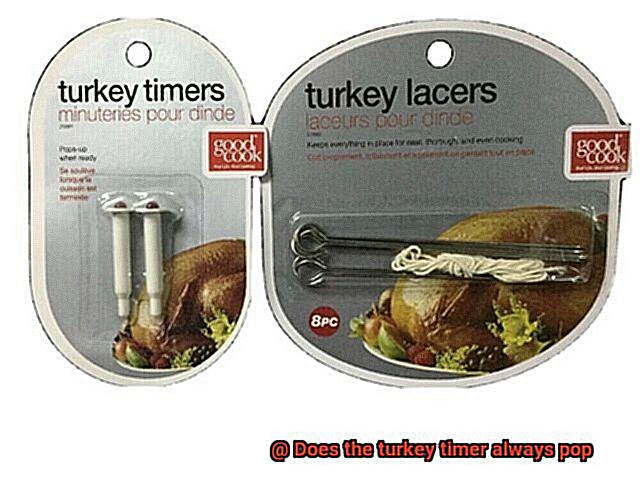
Oven-Safe Meat Thermometer
An oven-safe meat thermometer can be inserted into the turkey before it goes into the oven and left in place throughout the cooking process. This type of thermometer provides an accurate reading and is particularly useful for larger turkeys that may take longer to cook. However, it requires careful placement to ensure an accurate reading and should not touch any bone or cartilage.
Instant-Read Meat Thermometer
An instant-read meat thermometer can be used after cooking to check the temperature of the turkey quickly. This type of thermometer provides an accurate reading and can help you avoid overcooking your turkey. However, it requires careful placement and timing to ensure an accurate reading.
Infrared Thermometer
An infrared thermometer uses lasers to measure the surface temperature of the turkey. This type of thermometer is great for checking the temperature of the turkey without piercing it and losing precious juices. However, it’s not as accurate as other types of thermometers and may not give an accurate reading for large birds.
The Proper Placement of the Turkey Timer
Thanksgiving Day is just around the corner, which means it’s time to start thinking about the star of the show – the turkey. But with so much pressure to cook the perfect bird, it’s easy to feel overwhelmed. That’s where I come in as an expert on the proper placement and usage of a turkey timer.
Proper placement of the timer is crucial for ensuring your turkey is cooked thoroughly and safely. Insert it into the thickest part of the turkey, which is typically the breast or thigh, but make sure it doesn’t touch any bones. If it does, you risk getting a false reading, resulting in undercooked turkey. Nobody wants that.
It’s important to remember that even if the timer pops up, it doesn’t necessarily mean your turkey is fully cooked. It’s essential to use a meat thermometer to check that the internal temperature has reached a minimum of 165°F (74°C) throughout.
If you’re manually inserting your timer, make sure to follow the manufacturer’s instructions carefully. And don’t forget to test it before cooking to ensure it’s working correctly. Trust me, it’s better to be safe than sorry when it comes to your Thanksgiving meal.
In addition to proper placement and usage, keep in mind that cooking time can vary based on the size and weight of your turkey. So even if your timer has popped up, a larger bird may require more time in the oven. Be patient and don’t rush things – a perfectly cooked turkey is worth the wait.
To recap, here are some key takeaways:
- Proper placement of the timer in the thickest part of the turkey is crucial
- Avoid placing the timer near any bones
- Use a meat thermometer to check that your turkey has reached a minimum internal temperature of 165°F (74°C) throughout
- Test your timer before cooking
- Keep in mind that cooking time will vary based on the size and weight of your turkey
Tips for Ensuring the Timer Pops When Necessary
Thanksgiving dinner is incomplete without a perfectly cooked turkey. However, cooking a bird can be daunting, especially if you are not confident that your turkey timer will pop when necessary. To avoid undercooked or overcooked turkey, here are some tips to ensure the timer pops when needed.
Tip 1: Invest in a top-quality timer.
A reliable and accurate timer is essential for cooking a perfect turkey. Avoid using cheap timers as they may malfunction and lead to disastrous results. Choose timers with clear and easy-to-read displays, properly calibrated before use.
Tip 2: Place the timer correctly in the turkey.
The timer should be inserted into the thickest part of the breast or thigh, away from the bone. If placed incorrectly, the timer may not pop at the right time, leading to undercooked or overcooked meat.
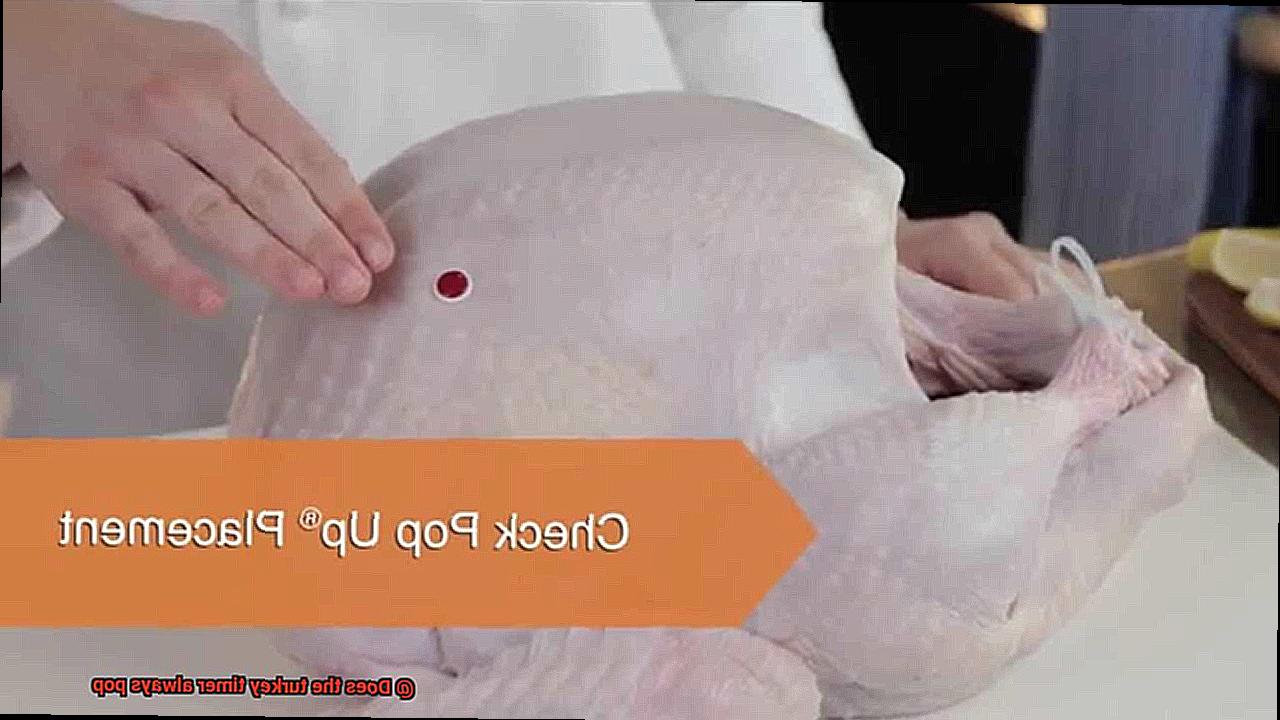
Tip 3: Check the accuracy of your oven’s temperature.
An oven that is not calibrated correctly can cause your turkey to cook unevenly or take longer than expected. This can result in your timer not popping at the right time. Invest in an oven thermometer to ensure that your oven is cooking at the right temperature.
Tip 4: Monitor the timer periodically during cooking.
Checking the timer regularly helps you adjust your cooking time to ensure that it pops when necessary. This also allows you to check if it’s working correctly and adjust accordingly.
Tip 5: Have a backup plan.
While a turkey timer is helpful, having an alternative method for checking if the turkey is cooked is always a good idea. You can use a meat thermometer or check for clear juices and thoroughly cooked meat.
Bonus tip
Avoid opening the oven door too often as heat escapes every time you do this, resulting in uneven cooking and temperature fluctuations. These factors can cause your timer not to pop at the right time.
How to Use a Meat Thermometer in Addition to a Turkey Timer
Cooking a turkey can be a daunting task, especially if you’re trying to impress guests. While the pop-up timer that comes with the bird may seem like a convenient solution for determining when your turkey is cooked, it’s important to understand that it’s not always accurate. To ensure that your turkey is thoroughly cooked and safe to eat, using a meat thermometer in addition to a turkey timer is essential. Here are five subtopics to help you understand how to use a meat thermometer in addition to a turkey timer:
Understanding How the Turkey Timer Works
The turkey timer is inserted into the thickest part of the turkey’s thigh, where the meat takes the longest to cook. The timer measures the internal temperature of the bird and alerts when it has reached a safe temperature for consumption – 165°F (75°C) for a fully cooked turkey. However, since the timer relies on temperature-sensitive springs, several factors such as oven temperature, size and shape of the turkey, and its placement in the oven can affect its accuracy.
Knowing the Types of Meat Thermometers Available
There are two types of meat thermometers available: analog and digital. Analog thermometers are the traditional type with a metal stem and face that displays the temperature. Digital thermometers have a probe that’s inserted into the meat and display the temperature on a digital screen. Digital thermometers are more accurate than analog ones and are recommended for use.
Properly Using a Meat Thermometer
To use a meat thermometer, insert it into the thickest part of the turkey without touching any bones. The ideal temperature for a fully cooked turkey is 165°F (75°C). If your thermometer reads below this temperature, continue cooking the turkey until it reaches 165°F (75°C). It’s essential to clean your thermometer before and after each use to prevent contamination.
Checking Temperature in Different Areas
Different parts of the turkey may cook at different rates, so it’s best to check the temperature in multiple areas, such as the thigh and breast. Ensure that the thermometer is inserted into the thickest part of the meat without touching any bones or other objects.
Avoiding Overcooking
Overcooking your turkey can result in dry and tough meat. Using a meat thermometer can help you avoid this by checking the temperature periodically throughout cooking. Once the turkey reaches 165°F (75°C), remove it from the oven or grill immediately.
Cooking Guidelines for Thanksgiving Turkeys
Thanksgiving is one of the most anticipated holidays of the year, and for many families, the centerpiece of this special occasion is a succulent turkey. However, cooking a turkey can be an intimidating task, especially if you’re not sure how to properly use a meat thermometer or turkey timer. In this article, we’ll explore everything you need to know about cooking guidelines for Thanksgiving turkeys.
First and foremost, food safety should be your top priority when cooking a turkey. To avoid any potential foodborne illnesses, it’s essential to ensure that your turkey is cooked to the right temperature. While turkey timers are convenient devices that pop up or turn red when the turkey has reached a certain internal temperature, they are not always accurate. Therefore, it’s crucial to use a meat thermometer to double-check that your turkey has reached an internal temperature of 165°F (74°C) in three different places: the thickest part of the breast, the innermost part of the wing, and the innermost part of the thigh.
To get an accurate reading from your meat thermometer, it’s important to understand how it works and use it correctly. There are different types of meat thermometers available, including digital and analog versions. Some can be inserted into the turkey before cooking, while others are designed to be used while the turkey is still in the oven. Regardless of which type you choose, make sure you don’t touch any bones or other objects when checking temperatures in different areas.
While using a meat thermometer is crucial for ensuring that your turkey is fully cooked and safe to eat, it’s equally important to avoid overcooking it. Overcooking your turkey can result in dry meat that’s not enjoyable to eat. With this in mind, make sure you monitor your turkey closely as it cooks and remove it from the oven as soon as it reaches the recommended internal temperature.
2–NlQE-Ico” >
Conclusion
In conclusion, the quest for the perfect Thanksgiving turkey is not an easy feat, and the debate surrounding whether the turkey timer always pops has left many chefs scratching their heads. As we’ve discovered, while the turkey timer operates using a spring-loaded mechanism that reacts to heat, it may not always be foolproof due to several factors such as cooking time variations, oven temperature precision, and meat placement.
To ensure your turkey is safe and cooked thoroughly, it’s crucial to use a meat thermometer in conjunction with your turkey timer. Meat thermometers come in various types such as digital or analog versions. Proper usage involves inserting it into the thickest part of the bird without touching any bones or other objects.
Additionally, following cooking guidelines meticulously is vital to avoid undercooked or overcooked turkey. The recommended internal temperature for fully cooked turkey is 165°F (74°C) in three different places: the thickest part of the breast, innermost part of the wing, and innermost part of the thigh.
Investing in a high-quality timer and placing it correctly inside your bird while monitoring your oven’s temperature accuracy periodically can help you cook a perfect Thanksgiving turkey. Avoid opening your oven door too often and have an alternative method for checking if your turkey is cooked such as using a meat thermometer or checking for clear juices and completely cooked meat.

